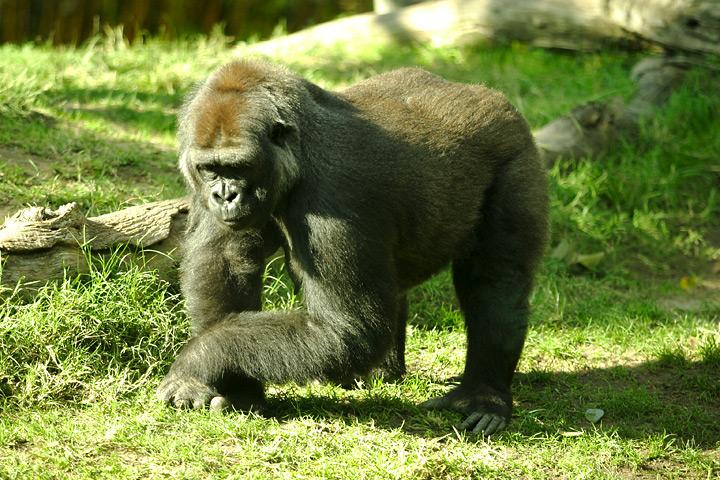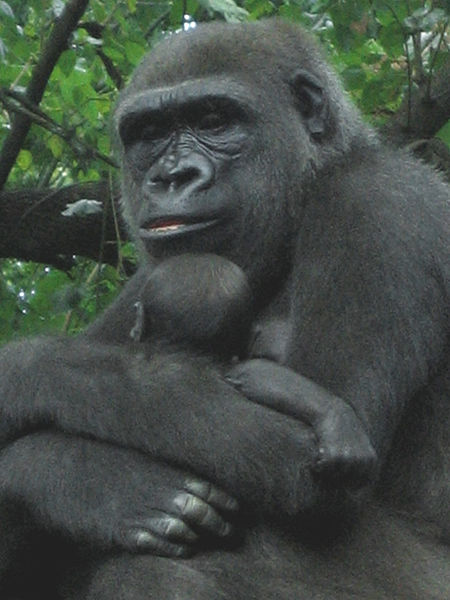Ape Adaptations:
Gorilla
gorilla has evolved many traits to
help it survive in the dense forests of Africa.
Having long arms and short legs gives the species a
natural quadrupedal
posture, which helps reduce stress on their bones and joints due to
their great mass. They normally "knuckle walk" on the knuckles of their
hands and the palms of their feet, but are also capable of walking
bipedally for limited periods. 3,4
![[Anonymous]. 1927. "Skelett des Menschen und des Gorillas, unnatürlich gestreckt." (image). <http://commons.wikimedia.org/wiki/Image:Primatenskelett-drawing.jpg>. Accessed 1 April 2008. An anatomical drawing of a human skeleton and a gorilla skeleton](Primatenskelett-drawing.jpg)
Western
Gorillas' large
size means that they have very few natural predators. To support their
sturdy bodies, they have relatively thick bones. 4
This drawing provides a comparison of the skeleton of a
gorilla
relative to that of a human, if both were in an bipedal position.

The hands
of the Western Gorilla
have fully opposable thumbs, while the feet each have an opposable
hallux (the "big toe); this allows them to dexterously handle small
objects and securely hold their infants. These features, along
with their large muscles, also make them fairly good at climbing, and
they will often do so to reach fruit and to build their nightly nests.
Large adults take care to stay near the trunk of trees when climbing. 3,4
As in all primates, the Western
Gorilla's skull is
made up of many bones. Most of these become fused together as a fetus
and form the
cranium, which houses their relatively large brains. An adult Western
Gorilla's brain weighs an average of 17.8 ounces. 15
The skull also protects the special
sense organs of
gorillas. As diurnal animals, they rely heavily on their sense of
vision. Large orbits in the skull enclose the eyeballs on every side
except the front and provide protection for these important organs.
Eyes that face forward and are fairly close together give the Western
Gorilla excellent depth perception, which is important when climbing in
trees. The anatomy of their eyeballs is very similar to that of humans,
with a complex retina containing rods and three types of cone cells
packed into the area of the fovea, which allows for
keen vision in
full color. Olfaction and audition are also important senses in
searching for food and in communication. 4 Learn
more about how the Western Gorilla behaves
and reacts to its environment here.
--------------------------------------------------------------------------------------------------------------------------------------------------------------------------------------------------------------------------------------------------------------------------
Site
designed by Arika Wussow, Last updated April 2008.


![[Anonymous]. 1927. "Skelett des Menschen und des Gorillas, unnatürlich gestreckt." (image). <http://commons.wikimedia.org/wiki/Image:Primatenskelett-drawing.jpg>. Accessed 1 April 2008. An anatomical drawing of a human skeleton and a gorilla skeleton](Primatenskelett-drawing.jpg)
